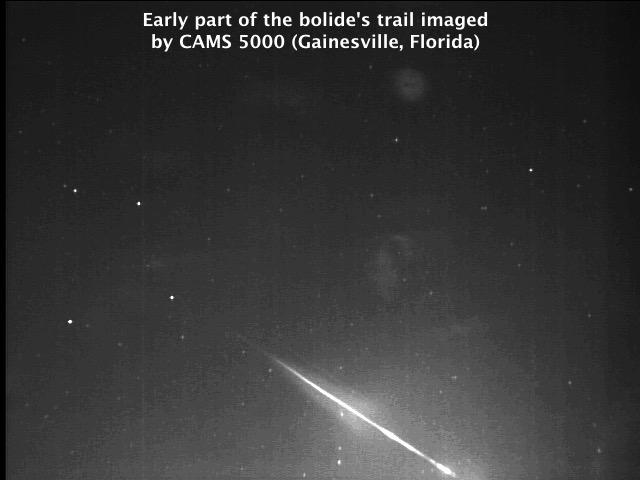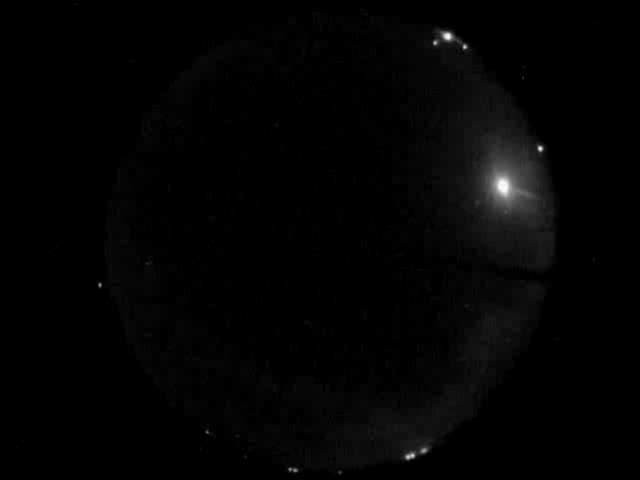CAMS and Spalding All-Sky Network (“SkySentinel”) low-light light level video cameras in Florida captured a bolide on 1 April 2020 (April Fool’s Day) brighter than the first-quarter moon. Witnessed by eighteen sky watchers in Florida and Georgia, American Meteor Society tagged this event as #1532-2020.
SkySentinel Node 10 (Newberry, Florida) all-sky camera saw the entire trajectory of the bolide, from first appearance until terminal explosion. The object first appeared at 04:31:42.879 and remained in view until its explosion at 04:31:44.008. The bolide’s terminal explosion was brighter than the first-quarter moon, which was then sitting in the western sky.
CAMS 5000 (Gainesville, Florida) also tracked the bolide during the early part of its trajectory. The bolide appeared at 04:31:42.880, staying inside the field of view until 04:31:43.280. Three-quarters of a second after exiting the camera’s field of view, the sky flash of the exploding bolide illuminated the camera’s field of view.
Video cameras at other CAMS-Florida sites also saw the sky flash of the exploding bolide. These included BarJ Observatory (New Smyrna Beach), College of Central Florida (Ocala), Florida Institute of Technology (Melbourne) and CAMS-Ocklawaha.
CAMS 5042 (Ocklawaha, Florida) briefly saw what was left of the bolide after it exploded. The bolide remnant entered the camera’s field of view (through clouds) at 04:31:44.181, disappearing one-tenth of a second later at 04:31:44.298.
From start to finish, the bolide’s duration was 1.42 seconds. This was sufficient duration to calculate the bolide’s trajectory using UFOOrbit software:
a = 2.116551 AU
e = 0.850391
i = 21.510193 degrees
peri = 299.107269 degrees
node = 11.643062 degrees
Epoch (JD) = 2458940.688691
On a scale of 0 to 1, the quality parameter of the computed orbit was QA = 0.508. Because the longitude of the object’s ascending node was in the same direction as the sun, it is apparent that the bolide was descending through the ecliptic plane when it collided with earth.
To simulate the meteoroid’s pre-impact orbit, its orbital parameters were entered into Starry Night Pro Plus 8 planetarium software. With a calculated period of 3.08 years, it had nearly a 4:1 commensurability with Jupiter, coming within 2-3 AU of the giant planet in 1991, 2003, and 2015. Jupiter’s gravity may have shifted the object’s orbit, putting it on a collision course with earth.
SkySentinel Node 10 (Newberry, Florida) captures the 1 Apr 2020 bolide





